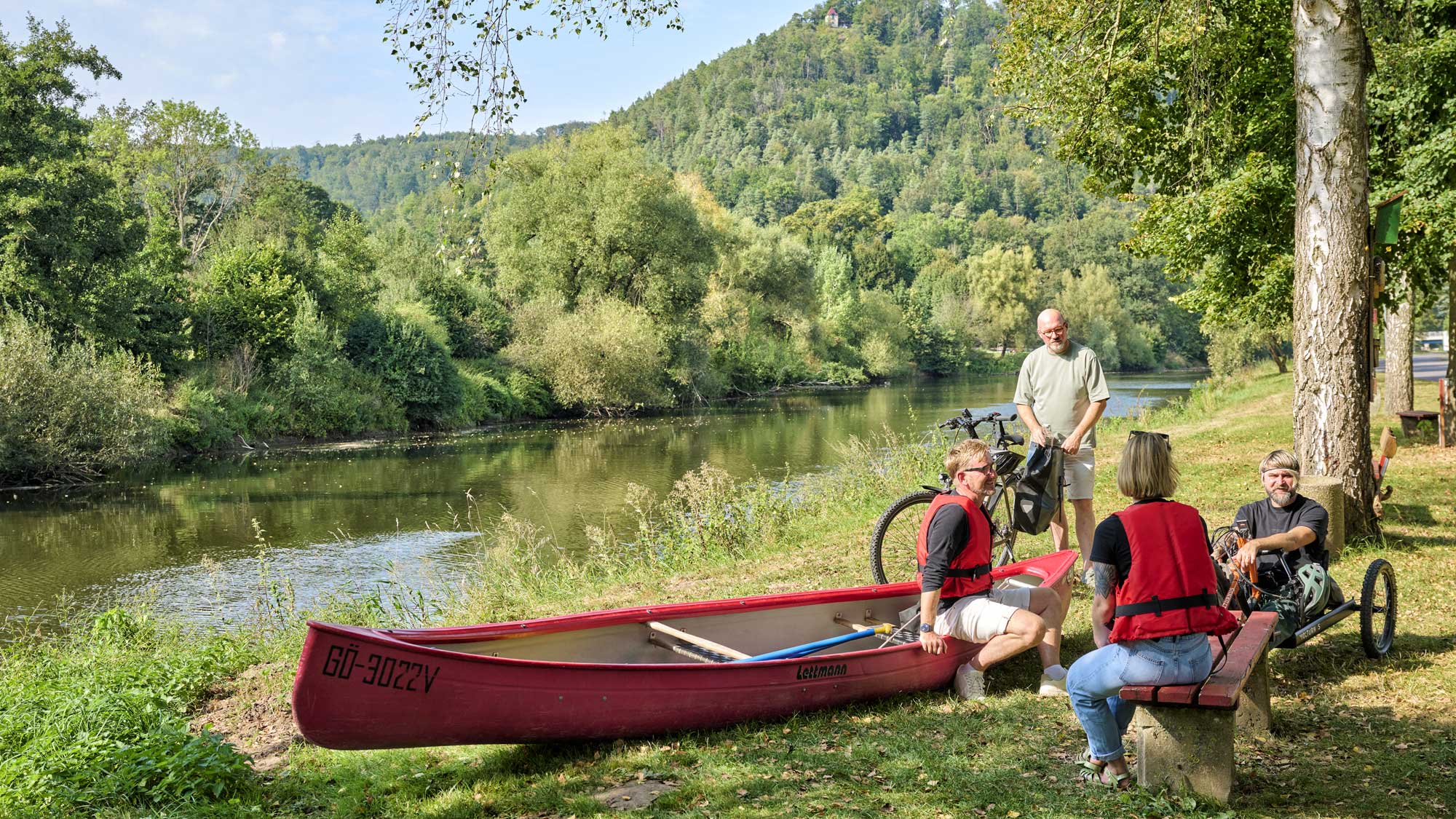You're in the right place! Whether in nature, in the middle of the city, for families, in the countryside, historic or traditional: among Thuringia's TOP hosts, everyone will find exactly the right address.
A journey into the Middle Ages
Martin Luther at Wartburg Castle
You can see deep grooves in the desk and crumbling masonry behind the green tiled stove. In the background, you hear the muffled sound of other visitors’ conversations, and the flapping wings of white doves, much like those that may have been kept in the courtyard during Luther’s time.
But how did Martin Luther end up at Wartburg Castle, and what was his stay there like?
A rebel at Wartburg Castle
500 years ago, on 4 May 1521 when Luther first arrived at his refuge in Wartburg Castle, things must have been quite a bit more rustic there. He had been on his way back from the Diet of Worms, where he had been summoned by Emperor Charles V to recant his writings, which he had refused to do. In order to protect Luther, his capture was staged to look like an attack on the carriage in which he was travelling.
The Edict of Worms, issued in 1521, made it illegal to hide Martin Luther, to offer him protection, or to provide him with food and shelter. Anyone who encountered him was required to hand him over to the authorities without delay. Luther’s ‘arrest’ was instigated by Elector Friedrich III of Saxony, who wanted to protect him from the Imperial ban imposed on him due to his alleged heresy and schismatic activities. While Luther was still at Worms, the Elector had secretly let him know that he was going to arrange some sort of protective custody for him until ‘the excitement’ had died down a bit …
But he wasn’t taken to Wartburg Castle straight away. First his captors rode back and forth through the Thuringian Forest with him for a few hours to lay down false trails. When Luther finally arrived at Wartburg Castle late at night under the cover of darkness, he was taken to a chamber with a separate bedroom – a kind of luxury cell for noble prisoners. Only the lord of the castle knew the newcomer’s true identity. As castellan to the Elector of Saxony, he had been familiar with Duke Friedrich’s plan, and was now able to keep a close eye on Luther and protect him personally.
Luther’s transformation and solitude
At the castle, Luther led a solitary life. Initially his only comfort in this seclusion were the spectacular views, far across the peaks of the Thuringian Forest all the way to Hesse. The stairs leading to his rooms were most likely pulled up in the evening using chains. Luther grew his hair and beard. Two servants brought him food in his chamber. As spring advanced, he wasn’t allowed to leave the castle – the danger of being recognised was too great. Later on, it did become possible, but always with extreme caution. Luther would don aristocratic clothes and a sword, transforming himself from a monk into the mysterious ‘Squire George’ – to all appearances a knight.

Lucas Cranach the Elder was an important Renaissance painter who worked at the court of the Elector Friedrich III of Saxony. He painted several portraits of Luther, was a witness at his marriage and was godfather to his son, Johannes. ©Rainer Salzmann, Wartburg-Stiftung
Many people believed the rumours circulating after Luther’s sudden disappearance and thought that he had been murdered. Elector Friedrich III of Saxony deliberately chose to have no knowledge of Luther’s whereabouts. After a week, Georg Spalatin initiated a correspondence with him and also forwarded Luther’s replies to his trusted associates. The Elector’s messengers made sure that all letters reached their destination safely. But even years later, few people were aware that Luther had been hiding at Wartburg Castle from 4 May 1521 to 1 March 1522.
Luther designed his own seal, the Luther rose. It is a black cross on a red heart within a white rose – surrounded by a gold ring. It adorns all of his letters, manuscripts and books. The seal was modelled on a similar rose in the lion and parrot window of Erfurt’s Augustinian monastery. This stained-glass window is more than 800 years old and can be admired to this day.
Luther struggled to come to terms with the fate that had been imposed on him. After months of intense internal and external conflict, he now experienced silence and solitude at the castle as well as mental and physical exhaustion. As his mind and his body processed the recent events, they also needed to adjust to the unfamiliar lifestyle at Wartburg Castle. Here they served rich, meaty fare fit for the nobility rather than plain and simple monks’ food.
The devil, the inkwell and the stain
Luther didn’t undergo just a physical crisis but also a spiritual one. In his early letters, he complains of feeling sluggish and listless, and of having to force himself to pray or perform any intellectual tasks. He began to have doubts about his cause. His vivid imagination, and his internal struggle with recent events and with his work, were the likely reason why he also felt constantly tempted by the devil.
People in the Middle Ages did not regard it as odd if someone claimed to have seen the devil. Nevertheless, the story of Luther throwing his inkwell at the devil and leaving a stain on the wall is of course only a legend. Visitors to Wartburg Castle are reminded of this tale by the little iron figure of the devil on the bare section of wall around the green stove.
Who was living and working at the castle back in those days? Which animals were kept there? And how was the castle supplied with food and water? Immerse yourself in the Middle Ages and see what daily life at the castle was like in Luther’s days during the 16th century.
Headerbild ©Rainer Salzmann, Wartburg-Stiftung
Accessibility
Did you like this story?
Visitors' information
Angebote
Booking
You might also be interested in ...














